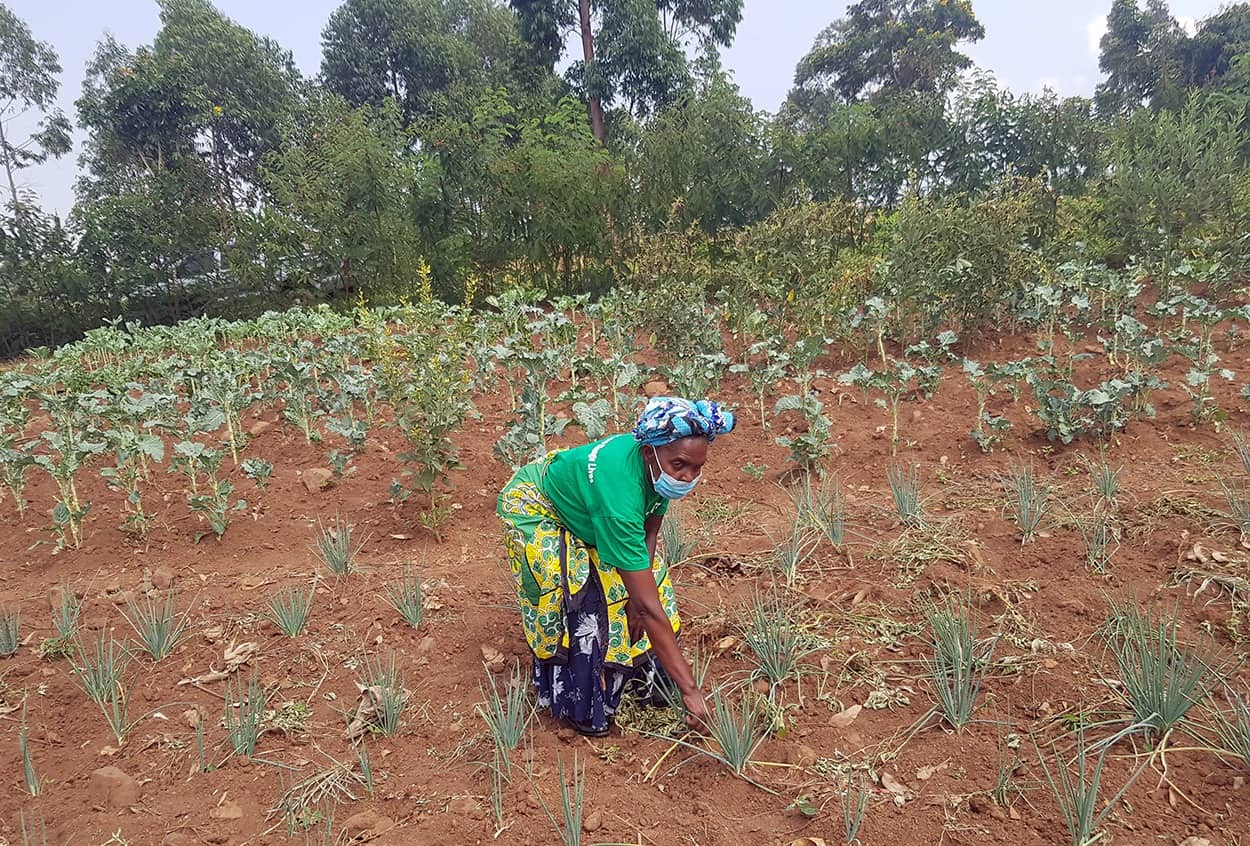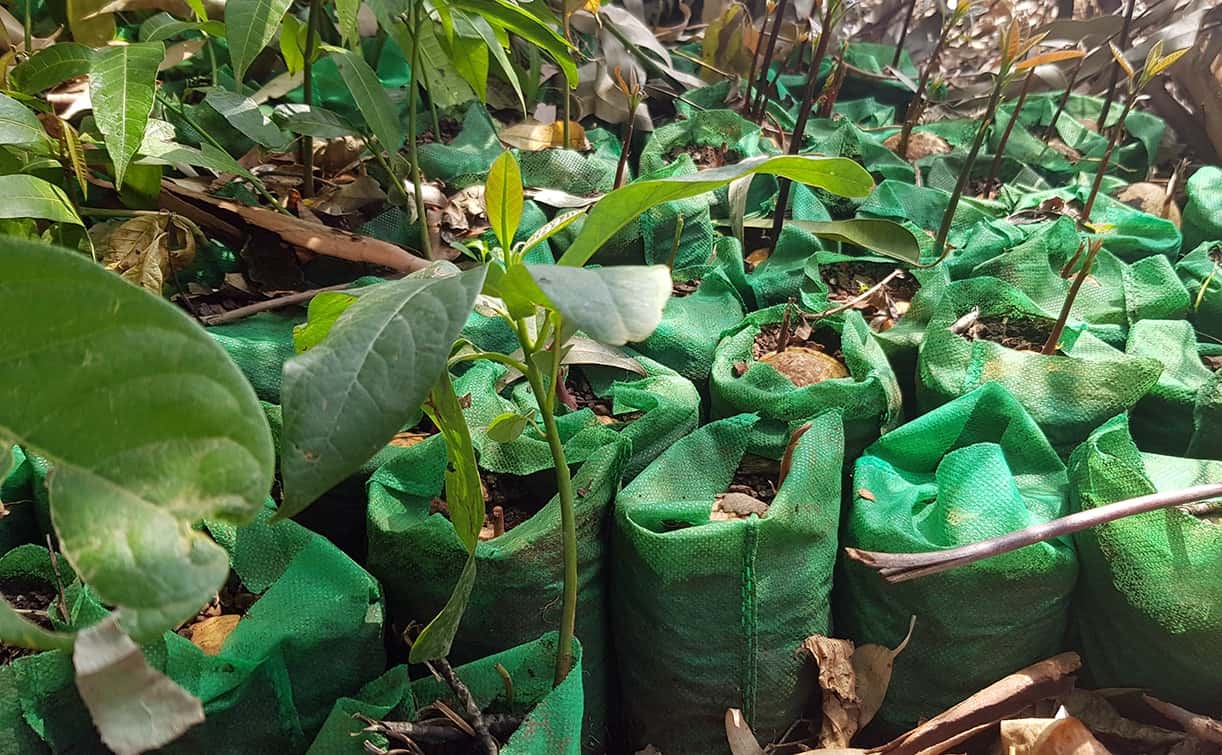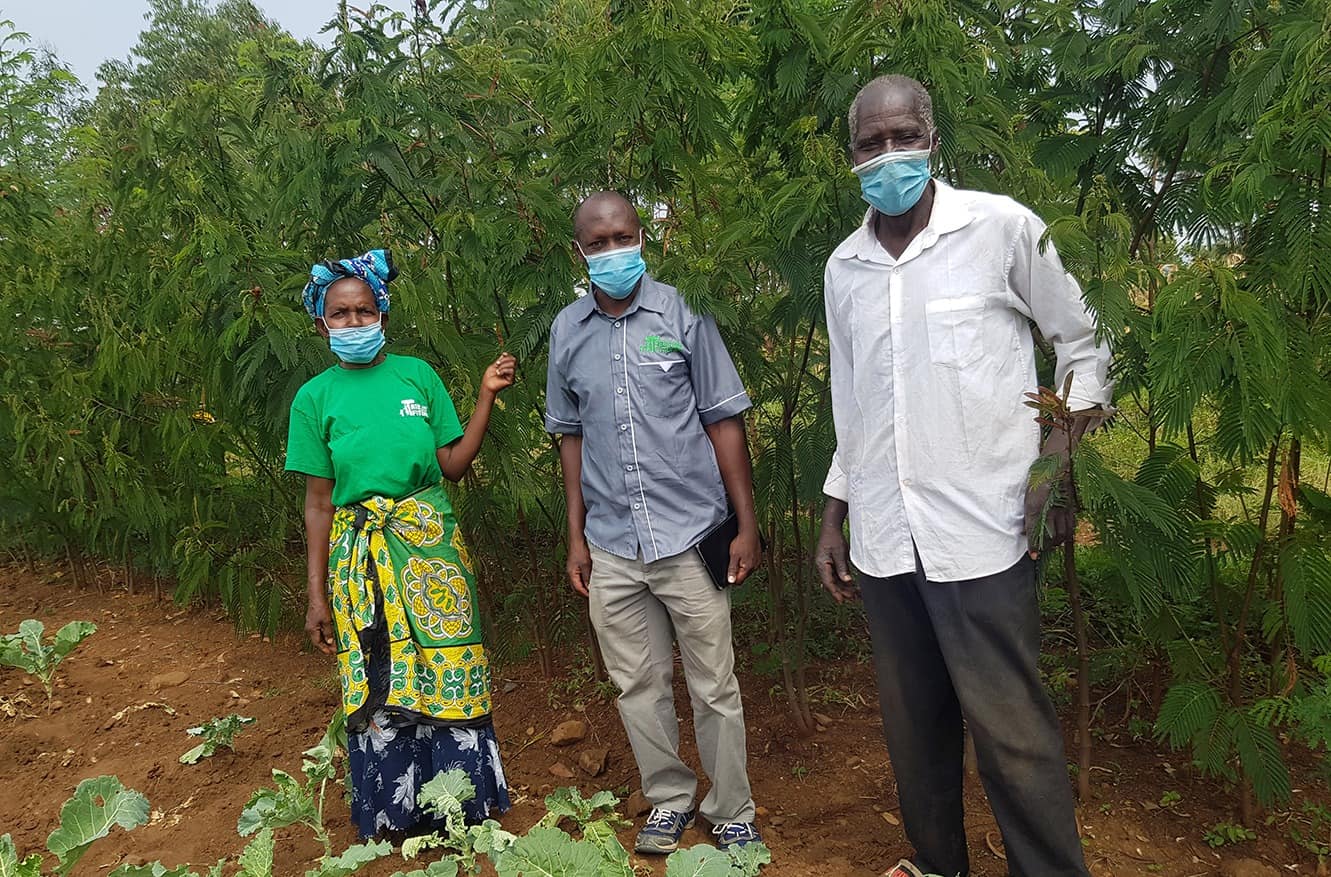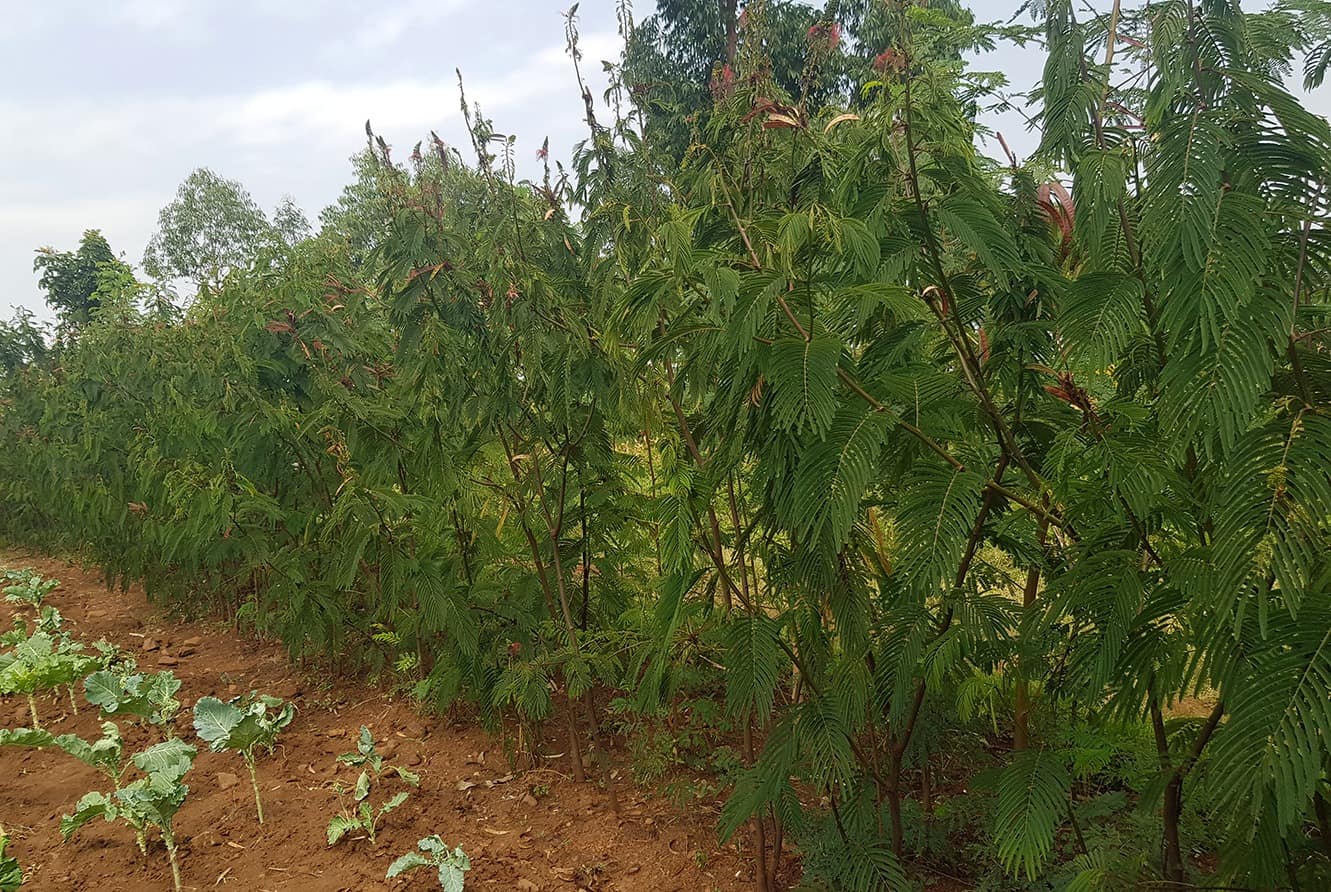On a rocky, uneven landscape in Mariwa village, Homa Bay, Kenya, lives Dorothy Akoth Onyango. The 55-year-old used to see her land as a setback to farming. After her husband retired from the Kenya Defense Force, Dorothy says she’d lost hope of being able to feed her family.
But her outlook on her land and her family’s future changed when she joined TREES for the Future’s Forest Garden training program in March 2020. She soon began seeing her farm’s potential as a thriving business and not just a challenging way to feed her family.

Dorothy’s land is thriving under the Forest Garden Approach
“The Forest Garden Approach is a good way to create healthy soils, healthy plants, healthy food and a healthy environment,” Dorothy says. But it’s the cost savings and income opportunity that stood out most to the matriarch of a 14-person household. “After learning from TREES staff, I realized that I could cut costs by up to 80 percent.”
A Promising Soil Solution
Trees for the Future (TREES) staff train farmers like Dorothy in the Forest Garden Approach over four years. Using agroforestry and sustainable farming practices, farmers restore degraded land and establish reliable sources of food and income for themselves and their families.

Given the challenging landscape, Dorothy has benefited from soil conservation techniques. She used to buy synthetic fertilizer to try to increase productivity.
“I have been accustomed to the application of synthetic fertilizers during farming which has led to complete degradation of soils and [it was] infusing chemical substances into the crops I was feeding to my family, which was worrying,” she says. “But after the TREES training on how to make compost and mulching to retain moisture, farming has been cheaper and sustainable.”

After years of relying on harmful practices, Dorothy’s farm is thriving under the Forest Garden Approach. Today, she is growing kale, spinach, tomatoes, passion fruit, avocado, mangoes, bananas, and more.
Forest Garden farmers like Dorothy report a 706% increase in access to nutrients. At the same time, the diversity on their land provides a stable source of income.
“I am able to pay school fees for my children in university and college, and some of my grandchildren’s education too.”
She’s also reinvesting her income in her business. She bought chickens to raise and sell at market and has plans to invest in livestock too.
Keeping Nutrients in and Antelope Out
As Dorothy’s Forest Garden grew, her healthy landscape started gaining some unwanted attention. Soon, wild animals couldn’t resist grazing on her garden, especially antelope from the nearby Kondela Forest.
Through her training, Dorothy learned to plant fast-growing, thorny trees and shrubs around her Forest Garden. This living fence provides the natural fertilizer her soil needs and soon grew tall enough to keep her pesky visitors out of her garden.

Dorothy’s living fence surrounds her Forest Garden, providing protection from grazing animals.
A Leader in her Community
Dorothy is the lead farmer of her 21-person farmer group. Lead farmers support TREES staff during training exercises and help keep staff and farmers connected throughout the year.
Seeing for themselves how powerful the Forest Garden Approach is, Dorothy and her fellow farmers say they never tired of spreading the Forest Garden message to other farmers in the area.
Help reach more farmers like Dorothy. Donate today.